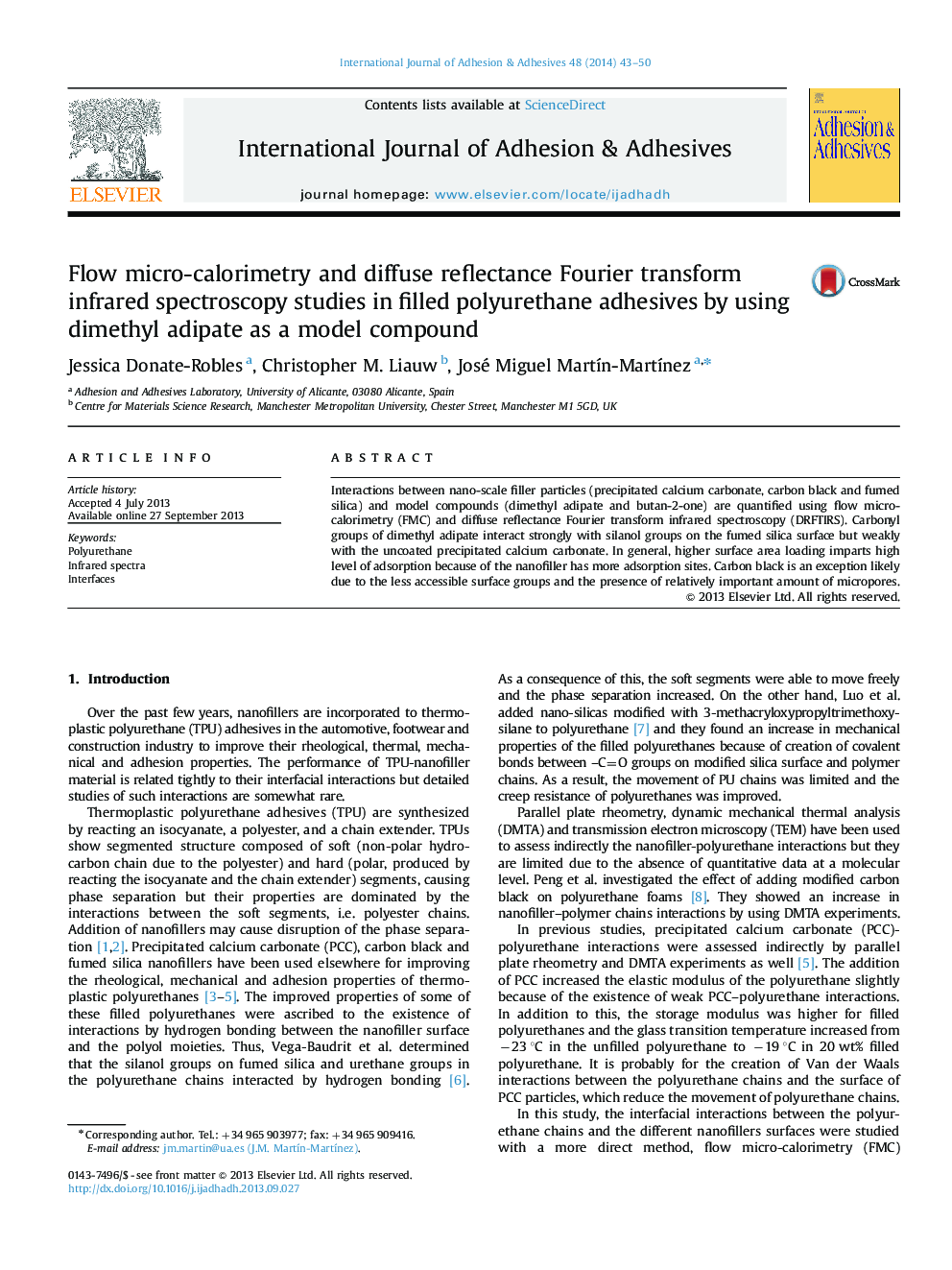| Article ID | Journal | Published Year | Pages | File Type |
|---|---|---|---|---|
| 776253 | International Journal of Adhesion and Adhesives | 2014 | 8 Pages |
Abstract
Interactions between nano-scale filler particles (precipitated calcium carbonate, carbon black and fumed silica) and model compounds (dimethyl adipate and butan-2-one) are quantified using flow micro-calorimetry (FMC) and diffuse reflectance Fourier transform infrared spectroscopy (DRFTIRS). Carbonyl groups of dimethyl adipate interact strongly with silanol groups on the fumed silica surface but weakly with the uncoated precipitated calcium carbonate. In general, higher surface area loading imparts high level of adsorption because of the nanofiller has more adsorption sites. Carbon black is an exception likely due to the less accessible surface groups and the presence of relatively important amount of micropores.
Related Topics
Physical Sciences and Engineering
Engineering
Mechanical Engineering
Authors
Jessica Donate-Robles, Christopher M. Liauw, José Miguel Martín-Martínez,
